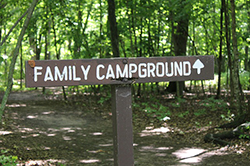 Norma is an assistant manager at a video store. After feeling very sick for a couple of days, she goes to the doctor and is diagnosed with strep throat. Since her employer provides sick time benefits, she calls the store manager and tells him she cannot work that day. He dismisses her illness as “just a sore throat” and orders her to report for work.
Norma is an assistant manager at a video store. After feeling very sick for a couple of days, she goes to the doctor and is diagnosed with strep throat. Since her employer provides sick time benefits, she calls the store manager and tells him she cannot work that day. He dismisses her illness as “just a sore throat” and orders her to report for work.
She complies, but the strep infection takes most of a week to go away because she could not rest. On the third day, she calls in sick again, despite the manager’s obvious displeasure. Six weeks later, the manager terminates her employment, citing declining sales as the reason. Norma believes otherwise and files a complaint with the U.S. Equal Employment Opportunity Commission.
Since the great recession began in late 2007, complaints like this have become common. The EEOC reported that it received almost 100,000 job bias complaints in 2010, a new record. More than a third of them were from employees who felt their employers retaliated against them; another third were race discrimination claims. Why is this happening? Employment law experts believe the recession has a lot to do with it, as dismissed employees have had trouble finding new jobs. They also believe the EEOC has stepped up enforcement of anti-discrimination laws. However, they also point to internal problems with employers.
Some employers might perform only those activities that they believe will give them an effective legal defense should an employee sue. They write anti-discrimination and anti-retaliation policies into their employee handbooks, make supervisors attend training once a year, and then call it a day. However, these things by themselves might not be effective. Policies do no good if managers do not enforce them.
Training that does not address trends such as discrimination and retaliation complaints will not stop them from happening. In addition, if managers do not monitor whether this training changes supervisors’ behavior, supervisors might conclude that the company is not serious about it.
Employment Practices Liability insurance covers an employer’s legal liability for wrongful acts against employees, including discrimination and retaliation. Insurance underwriters will look at an employer’s policies and training practices, but they will also consider its claim history. Underwriters will be wary of insuring employers with a record of frequent complaints against them. If they offer coverage at all, they will charge higher premiums to account for the perceived higher risk.
To prevent claims and keep insurance premiums low, employers should consider these measures:
Study financial results to determine how much these types of claims have cost or might cost in the future in terms of settlements, legal costs, time more profitably spent on other matters, workplace morale, insurance costs and other areas.
Ensure that you have strong policies in place against discrimination and retaliation.
Require supervisors and managers to attend training to prevent these kinds of claims. Include in the content of the training discussions of what is and is not permissible when it comes to discrimination and retaliation. Make it clear that performance evaluations will include incidents of discriminatory behavior.
Create a workplace culture that does not tolerate illegal activities of any kind. Senior managers should conduct themselves in ways that model the behaviors they want to see from subordinates.
Experts say that recessions always breed increased discrimination complaints against employers. However, that does not have to be the case with every employer. Effective training costs money, but that cost is far less than the cost of insurance deductibles, higher premiums, demoralized workforces, and damaged reputations. Discrimination and retaliation claims hurt a business’s bottom line. Preventing them makes both economic and moral sense.

 As the owner of a campground, you have the responsibility to protect your campers, their guests and their property. Insurance for campgrounds gives you the protection you need.
As the owner of a campground, you have the responsibility to protect your campers, their guests and their property. Insurance for campgrounds gives you the protection you need. The risk management firm PMA Companies recently released a report, Six Steps to a Safer Workforce: Building Accountability as an Essential Element for Injury Prevention in the Healthcare Industry. According to the report, a safety program that includes top-management commitment, as well as accountability for safety at every level of the business, will help optimize productivity, keep employees safe and healthy, and reduce costs.
The risk management firm PMA Companies recently released a report, Six Steps to a Safer Workforce: Building Accountability as an Essential Element for Injury Prevention in the Healthcare Industry. According to the report, a safety program that includes top-management commitment, as well as accountability for safety at every level of the business, will help optimize productivity, keep employees safe and healthy, and reduce costs. Aquariums entertain kids and adults with a variety of programs and activities. If you own or operate an aquarium, purchase adequate insurance for aquariums as you protect your patrons and your business.
Aquariums entertain kids and adults with a variety of programs and activities. If you own or operate an aquarium, purchase adequate insurance for aquariums as you protect your patrons and your business. The theory of respondeat superior makes employers vicariously liable for wrongful acts committed by employees during the course and scope of their employment. However, the “going and coming” rule generally exempts employers from liability for wrongful acts committed by employees while on their way to and from work, because employees are said to be outside of the course and scope of employment during their daily commute.
The theory of respondeat superior makes employers vicariously liable for wrongful acts committed by employees during the course and scope of their employment. However, the “going and coming” rule generally exempts employers from liability for wrongful acts committed by employees while on their way to and from work, because employees are said to be outside of the course and scope of employment during their daily commute. In October 2010, a construction worker in Pennsylvania was crushed to death by a section of a steel plate. The month before, a worker in Houston died when a pallet carrying a one-ton load struck him. In Maryland, two bar joists fell off a stack of joists on a flatbed truck, killing a worker.
In October 2010, a construction worker in Pennsylvania was crushed to death by a section of a steel plate. The month before, a worker in Houston died when a pallet carrying a one-ton load struck him. In Maryland, two bar joists fell off a stack of joists on a flatbed truck, killing a worker. As an artisan contractor, you have invested years in perfecting your craft. Protect your professional reputation, personal assets and business future with artisan contractor insurance.
As an artisan contractor, you have invested years in perfecting your craft. Protect your professional reputation, personal assets and business future with artisan contractor insurance. Welders can use over 100 different processes to join or cut metal. As a welder, you work around hot metals and tools in a variety of hazardous locations. To protect yourself, your business and your personal assets, purchase welders insurance.
Welders can use over 100 different processes to join or cut metal. As a welder, you work around hot metals and tools in a variety of hazardous locations. To protect yourself, your business and your personal assets, purchase welders insurance. A Report to the Nation on Occupational Fraud and Abuse by the Association of Certified Fraud Examiners provides a wealth of valuable information for any company. According to the report: Organizations with fewer than 100 employees have a higher rate of fraud exposure to billing, check tampering, skimming, expense reimbursement, cash on hand, payroll, and larceny than their counterparts do.
A Report to the Nation on Occupational Fraud and Abuse by the Association of Certified Fraud Examiners provides a wealth of valuable information for any company. According to the report: Organizations with fewer than 100 employees have a higher rate of fraud exposure to billing, check tampering, skimming, expense reimbursement, cash on hand, payroll, and larceny than their counterparts do. Four of the most common work complaints include theft, harassment, discrimination and violence. Employees have the right and responsibility to report anything that affects health, safety or culture in the company. However, if these issues are handled improperly, your business could face serious consequences, including fines or penalties. Learn how to address work complaints the right way as you reduce liability and create a positive work environment.
Four of the most common work complaints include theft, harassment, discrimination and violence. Employees have the right and responsibility to report anything that affects health, safety or culture in the company. However, if these issues are handled improperly, your business could face serious consequences, including fines or penalties. Learn how to address work complaints the right way as you reduce liability and create a positive work environment.



